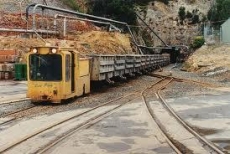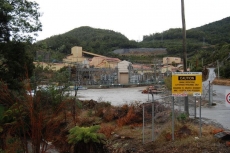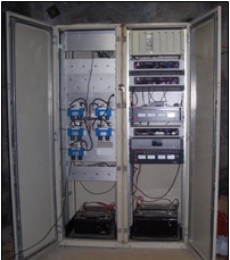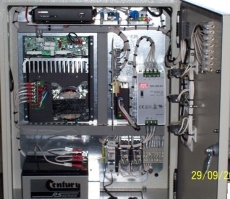In the mid 90's we had the privilege of working at Pasminco's Rosebery Mine. At that time the bulk of our activity was to provide service and maintenance to the electric locomotives in use at the time, and to help maintain anything else that used electronics.
The mine was a fantastic place to work. Because much of the workforce was employed directly by Pasminco and employment was stable the culture there was much like extended family. There was wonderful camaraderie and friendships developed quickly.
Pasminco, always an innovative company and safety driven, had adopted leaky feeder technology in the late 1980's. It installed a network using DELTEC amplifiers and a broadband leaky feeder cable. The system was unique because it operated in the UHF band and although its amplifier bandwidth was quite narrow it had enough capacity for three channels and initially operated with just two.
In 2003 Pasminco (soon to become Zinifex), introduced a production reporting technology which, by using a truck or machine mounted terminal, transmitted the data it had gathered back to the surface via the leaky feeder communications system. A computer correlated the information and produced production statistics. The system also reported in real time, vehicle location data.
The introduction of this system required the addition of a third channel which when added caused problems with channel cross talk. When Coastal Electronics was asked to investigate, we conducted a system audit to establish cause and corrective action. In consultation with mine management and with and eye to the future we recommended that in addition to rectifying the cross talk problem, the head-end be expanded to have a six channel capacity so that other services could be added.
As a first step we installed the expanded head-end using GME RP3800 repeaters and a Tele-Wave M-107-450-6TSP combiner. We repaired the leaky network removing problems caused by inter-mods and black spots while setting levels throughout the mine at the same time by strategically placing the existing bi-directional amplifiers (boosters) to achieve system balance. The whole process took nearly eighteen months to complete.
The mine radio system proved to be effective and reliable. Remote blasting was successfully installed and used for a couple of years and an infrastructure telemetry channel was added as well, which controls fans, pumps and other ancillary equipment.
An underground incident involving fire on a bogger (underground loader) spawned the idea of developing an early warning fire alarm system, and within a few months a decision was made to connect machines fitted with fire suppression equipment to the radio system.
In 2006 the alarm monitoring system was installed.
The alarm works by sending the machine's identification details to the surface via radio immediately the fire suppression is activated. A monitor on the surface alerts personnel and displays information on which machine set off the alarm.
In the seven years 2003-2009 that Coastal Electronics was involved with Rosebery mine's radio system, a number of initiatives where introduced into the network enhancing safety and functionality of the mine. It was truly challenging and rewarding to have been involved in the evolution of the communication system at Rosebery mine





